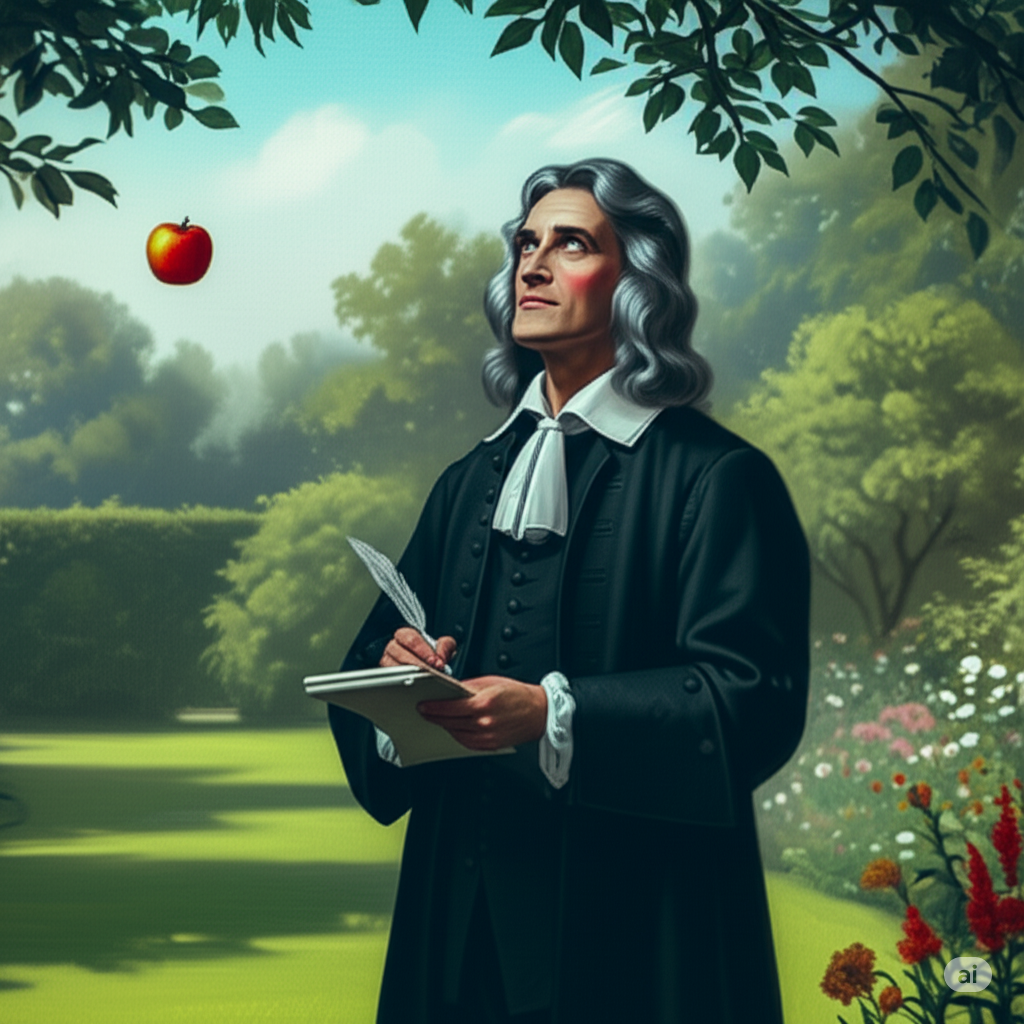Certainly! Here’s a detailed article on Newton and the Falling Apple, covering the story, its significance, and the scientific breakthrough it inspired:
The Story of Newton and the Falling Apple: The Birth of Gravity
The tale of Sir Isaac Newton and the falling apple is one of the most iconic stories in the history of science, often used to illustrate the moment of inspiration behind one of the greatest discoveries in physics: the law of universal gravitation.

The Setting
Isaac Newton was a physicist, mathematician, astronomer, and philosopher who lived in England during the 17th century. In 1665, during a period of isolation caused by the Great Plague, Newton retreated to his family estate in Woolsthorpe Manor. It was here that the famous apple incident reportedly took place.
The Apple Falls
The story goes that while Newton was sitting in the garden, he observed an apple fall from a tree. This simple, everyday event triggered a profound question in his mind: Why do apples always fall straight down to the ground? More broadly, he wondered, What force causes objects to fall?

Newton began to consider the possibility that the same force pulling the apple down toward the Earth might also govern the motion of celestial bodies, like the Moon orbiting the Earth or the planets orbiting the Sun.
The Law of Universal Gravitation
Newton’s curiosity led to the formulation of the Law of Universal Gravitation, which states that:
Every particle of matter in the universe attracts every other particle with a force that is directly proportional to the product of their masses and inversely proportional to the square of the distance between their centers.
In mathematical form:
F=Gm1m2r2F = G \frac{m_1 m_2}{r^2}
Where:
- FF is the gravitational force between two objects,
- GG is the gravitational constant,
- m1m_1 and m2m_2 are the masses of the objects,
- rr is the distance between the centers of the two masses.
This universal force explained not only why apples fall to the ground but also why the Moon orbits the Earth and why planets orbit the Sun.
Newton’s Impact
Newton’s discovery transformed science and laid the foundation for classical mechanics, influencing physics, astronomy, and engineering. His laws of motion combined with universal gravitation allowed scientists to predict the movements of objects on Earth and in space with remarkable accuracy.
The apple story, while possibly embellished over time, serves as a powerful symbol of curiosity and the pursuit of understanding natural phenomena.
Did the Apple Really Hit Newton’s Head?
Popular culture often depicts the apple falling directly on Newton’s head, but there is no historical evidence for this. Newton himself referred to the falling apple in conversations and writings, but the dramatic “apple hitting the head” part likely emerged later as a storytelling device to illustrate the suddenness of his insight.
Legacy

Newton’s work on gravity continues to underpin modern physics, even as Einstein’s theory of general relativity expanded and refined our understanding of gravitational forces in the 20th century. The apple tree at Woolsthorpe Manor remains a pilgrimage site for science enthusiasts, symbolizing the moment when observation sparked a revolutionary breakthrough.


